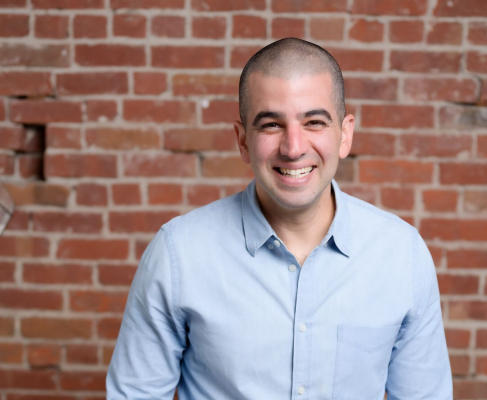Two years ago, we talked with Lior Susan, the founder of now six-year-old Eclipse Ventures in Palo Alto, Ca. At the time, the outfit believed that the next big thing wasn’t another social network but instead the remaking of old-line industries through full tech stacks — including hardware, software and data — capable of bring them into the 21st century.
Fast forward, and nothing has changed, not inside of Eclipse anyway. While the world has gone through a dramatic transformation owing to the coronavirus pandemic — never has the U.S.’s crumbling infrastructure been so apparent to so many – Eclipse is backing exactly the same kinds of companies that it always has and with the same size fund. Indeed, after closing its second and third funds with $500 million, the firm quietly closed its fourth vehicle earlier this month with $500 million in capital commitments from predominantly endowments.
This morning, we talked with Susan about Eclipse’s focus on revitalizing old industries that remain largely untouched by tech, and why the pitch of Lior and the rest of Eclipse’s team has never been more powerful. Excerpts from that conversation follow, edited lightly for length and clarity.
TC: Because of where Eclipse focuses, you were long aware of the coming supply chain crises that the pandemic brought to the fore. Have your priorities changed at all as an investor? Did you have a to-do list going into 2020 and has that changed?
LS: Not really. We’ve been saying from inception that the infrastructure that we are living in is 50 to 60 years old across the board. We’ve been all of this time in those social software and fintech, new ideas and consumer trends. But we don’t live in the internet, we actually live in the physical world. And the physical world is not [receiving investment] at all. But much of that innovation can be applied to the world in which we are living, and what we want to do is bring that $65 trillion backstage economy into the digital age.
TC: In this go-go market, not a lot of funds are raising the same amounts as they have previously. Why did you choose to do so?
LS: We have a very specific strategy. We only lead early-stage investments in around 22 companies per fund, we [want] 20% to 25% with our initial check, and we double down on companies that we think are breaking out and try to lead two or three rounds in a row. And we know how to run the spreadsheets and we know how to make an assumption [about] what is the enterprise value we need to create in order to deliver alpha returns, and [that math leads us to] $500 million.
TC: The last time we’d talked, Eclipse had also helped created and funded a company, Bright Machines, which primarily develops software for robotic systems inside of manufacturing companies. Have you launched any other companies in the last couple of years? I remember you don’t like the word ‘incubate.’
LS: We call it venture equity internally, but basically, we are very thesis oriented, so a lot of our investments start with us [circling around] an investment thesis and an area that we believe is getting really interesting. I’m right now working on a thesis around insurance in the manufacturing space [that will cover] working comp, facilities, assets . . . It [always] will start with a one-page thesis and we’ll talk inside the firm about it, and we’ll go hunt. But we don’t find what we like in a lot of cases. This is where we’re like, ‘Okay, we come from operating backgrounds. Why not roll up our sleeves and figure out how we can go and build these companies?’
You’re right that we did Bright Machines. We’ve also done Bright Insight (an IoT platform for biopharma and medtech that just raised $101 million in Series C funding led by General Catalyst), Chord (a commerce-as-a-service software for direct-to-consumer brands that just raised $18 million in Series A funding), and Metrolink (a new company that helps organizations design and manage their data flows). We’ve done [this model] a [few] times where we didn’t just invest in the company but we’re part of the founding team or we’re carving out assets. We’re trying to keep it very flexible.
TC: Interesting that you couldn’t find an insurance company focused on the manufacturing industry that you like.
LS: We have a lot of theses like that. We see a lot of horizontal business models and tech that [could work well] in the verticals where we’re playing and that we know need solutions. So, can you do a Slack for construction, or can you find the right people to build a Lemonade for manufacturing, or can you find the Shopify for industrial assets or spare parts?
TC: What size checks are you writing?
LS: I’d say $3 million to $4 million initial checks and up to $20 million or $25 million in a Series B, but you will find a lot of our companies where we invested $150 million plus over the lifetime of the company.
TC: Which company has attracted the most from Eclipse?
LS: I’d guess Cerebras [Systems, which reportedly makes the world’s largest computer chip].
TC: What do you make of what we’re hearing from the new administration in the U.S. on the infrastructure front. Do you think it’s talking about pouring money into the right verticals?
LS: I was on a call with the manufacturing task force on Monday, and I will tell you — without getting into politics at all, because that’s above my pay grade — that the current administration is going to pour hundreds of billions of dollars, if not trillions of dollars, into upgrading the infrastructure of this country. And it’s going to be semiconductors, batteries, manufacturing, industrial infrastructure as a whole . . .
[I think last year’s ventilator shortage made clear] that we’d lost 100% of the manufacturing capabilities of this country and Western countries as a whole. And I think everyone now understands that you’re going to see a massive swing of investment in infrastructure and the only way to do it is through technology, because we actually don’t have a million people here that want to [work on an assembly line]. We actually need automation lines and software and computer vision and machine learning and everything that Silicon Valley is really good at.
TC: You have insight into what’s happening on the semiconductor front through Cerebras and other bets. There’s obviously a huge chip shortage that’s impacting everyone, including the auto industry. How long will it take for supply to catch up to demand?
LS: I think we’re going to see some big changes, but it’s going to take many, many, many years. This is not software, we cannot bring everything up [to speed overnight] as you actually need fabs and cleaning rooms and assets. It’s pretty complicated.
It’s going to get worse in the next couple of quarters. It’s good for some of our companies that are working on the problem, but overall, as an economy, it’s pretty bad news.


![The State of Affiliate Marketing & Campaign Management with Adam Riemer [Podcast] 3 sejshow featured image copy 3 608abc1e8dd7d](https://www.thetimesclock.com/wp-content/uploads/2021/04/sejshow-featured-image-copy-3-608abc1e8dd7d-150x150.jpg)